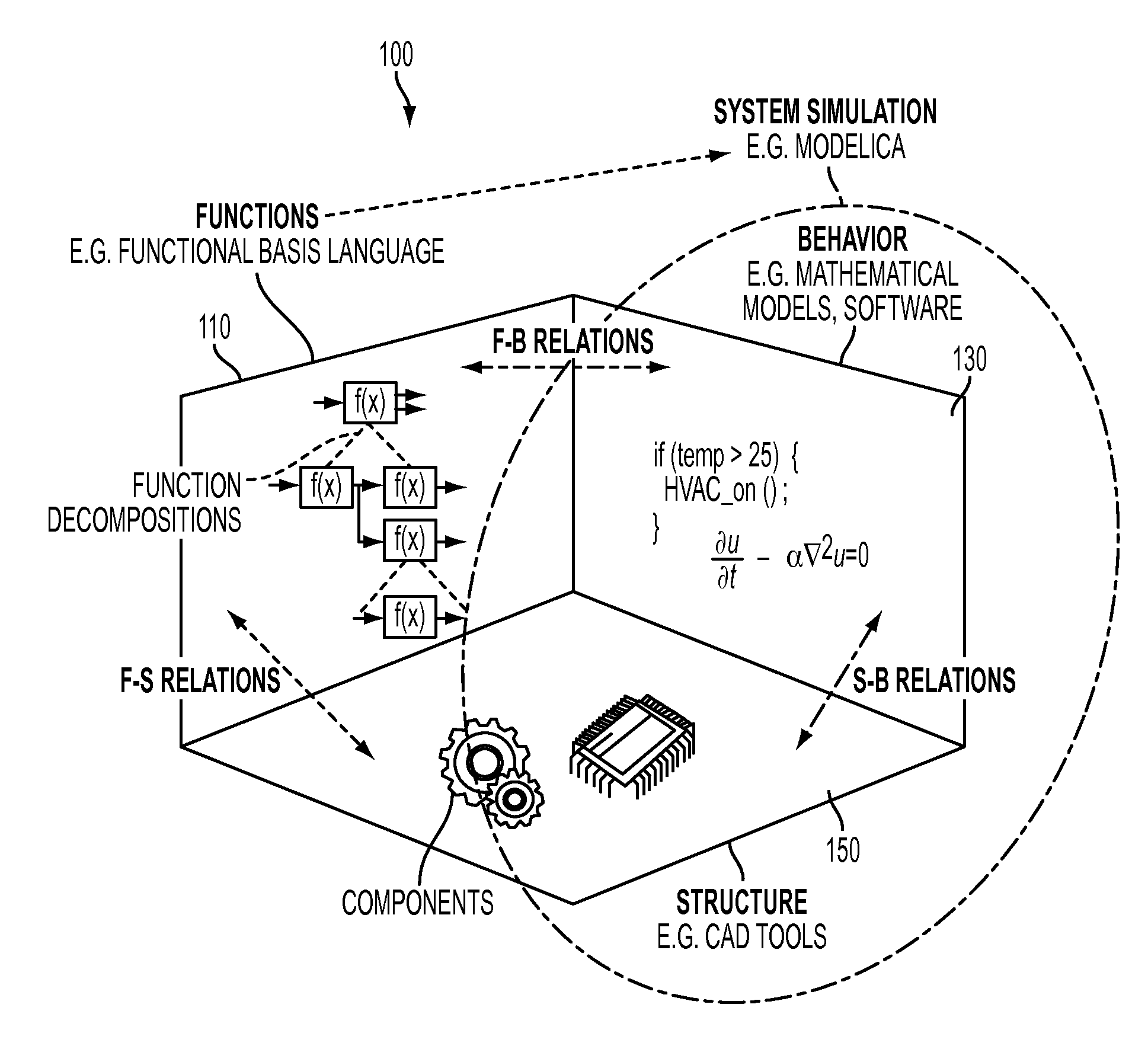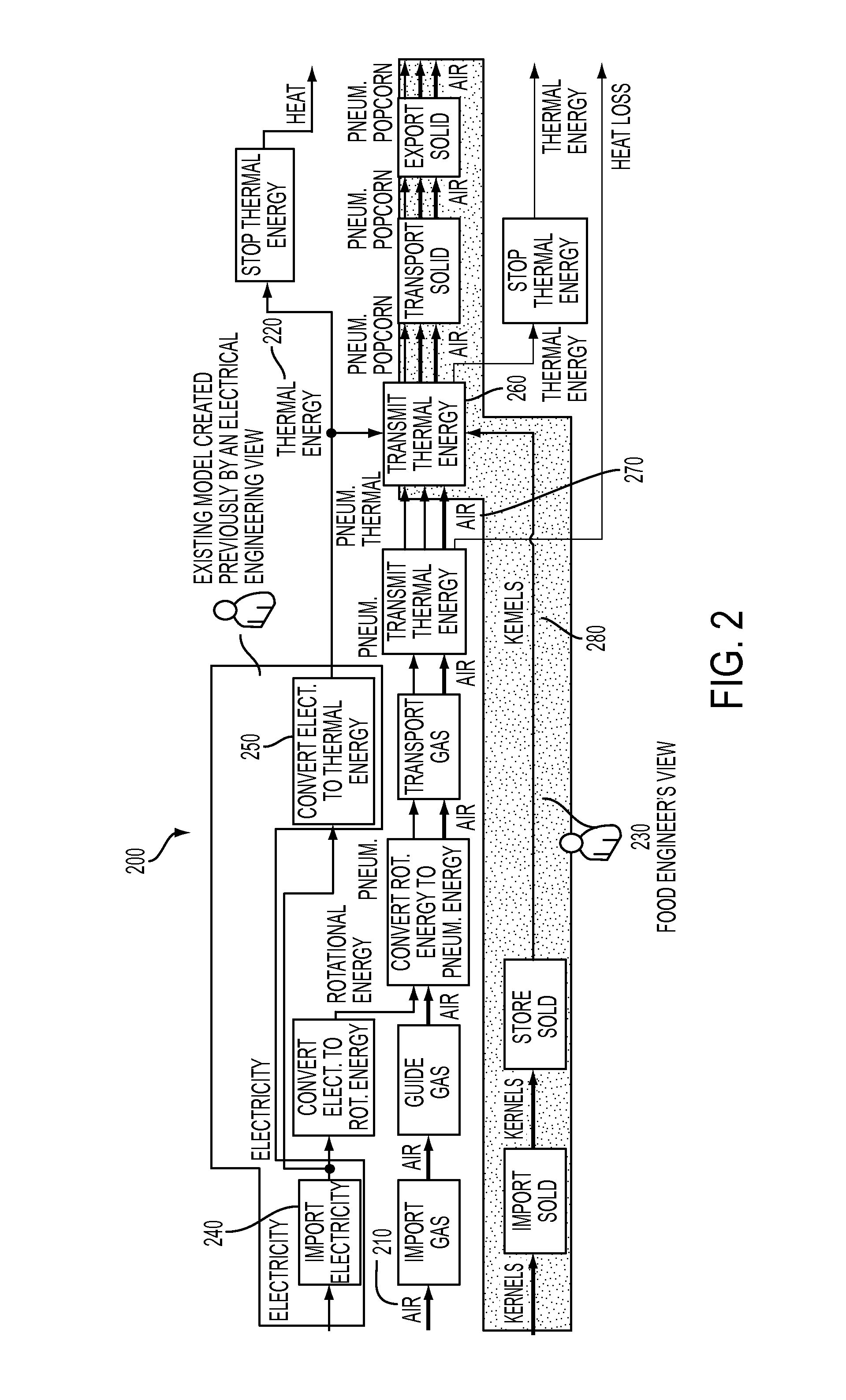Context-based synthesis of simulation models from functional models of cyber-physical systems
a functional model and simulation model technology, applied in the field of simulation model synthesis, can solve problems such as the difficulty of realizing concurrent engineering, the design of cyber-physical systems, and the complexity of product development, and the complexity of complex systems
- Summary
- Abstract
- Description
- Claims
- Application Information
AI Technical Summary
Benefits of technology
Problems solved by technology
Method used
Image
Examples
Embodiment Construction
[0027]Modeling and simulation have evolved independently on different engineering domains. Coupling different tools for a holistic analysis and multi-domain simulation is very complicated and sometimes not even possible. The present disclosure is based on the concept that integrated CPS design requires a general cross-disciplinary approach capable of characterizing how design changes in one domain affect the rest of the domains in the system and the system-level behavior. The Function-Behavior-State (FBS) methodology is a general framework for system development where functionality, or a discipline-independent description of what the system does, is used to unify the reasoning, communication and understanding between engineers and tools of various disciplines. Functions are related to states (structures or entities and attributes of entities) and behaviors (a change of states over time). States and behaviors are concrete realizations of functions that can, theoretically, be used to ...
PUM
 Login to View More
Login to View More Abstract
Description
Claims
Application Information
 Login to View More
Login to View More - R&D
- Intellectual Property
- Life Sciences
- Materials
- Tech Scout
- Unparalleled Data Quality
- Higher Quality Content
- 60% Fewer Hallucinations
Browse by: Latest US Patents, China's latest patents, Technical Efficacy Thesaurus, Application Domain, Technology Topic, Popular Technical Reports.
© 2025 PatSnap. All rights reserved.Legal|Privacy policy|Modern Slavery Act Transparency Statement|Sitemap|About US| Contact US: help@patsnap.com



